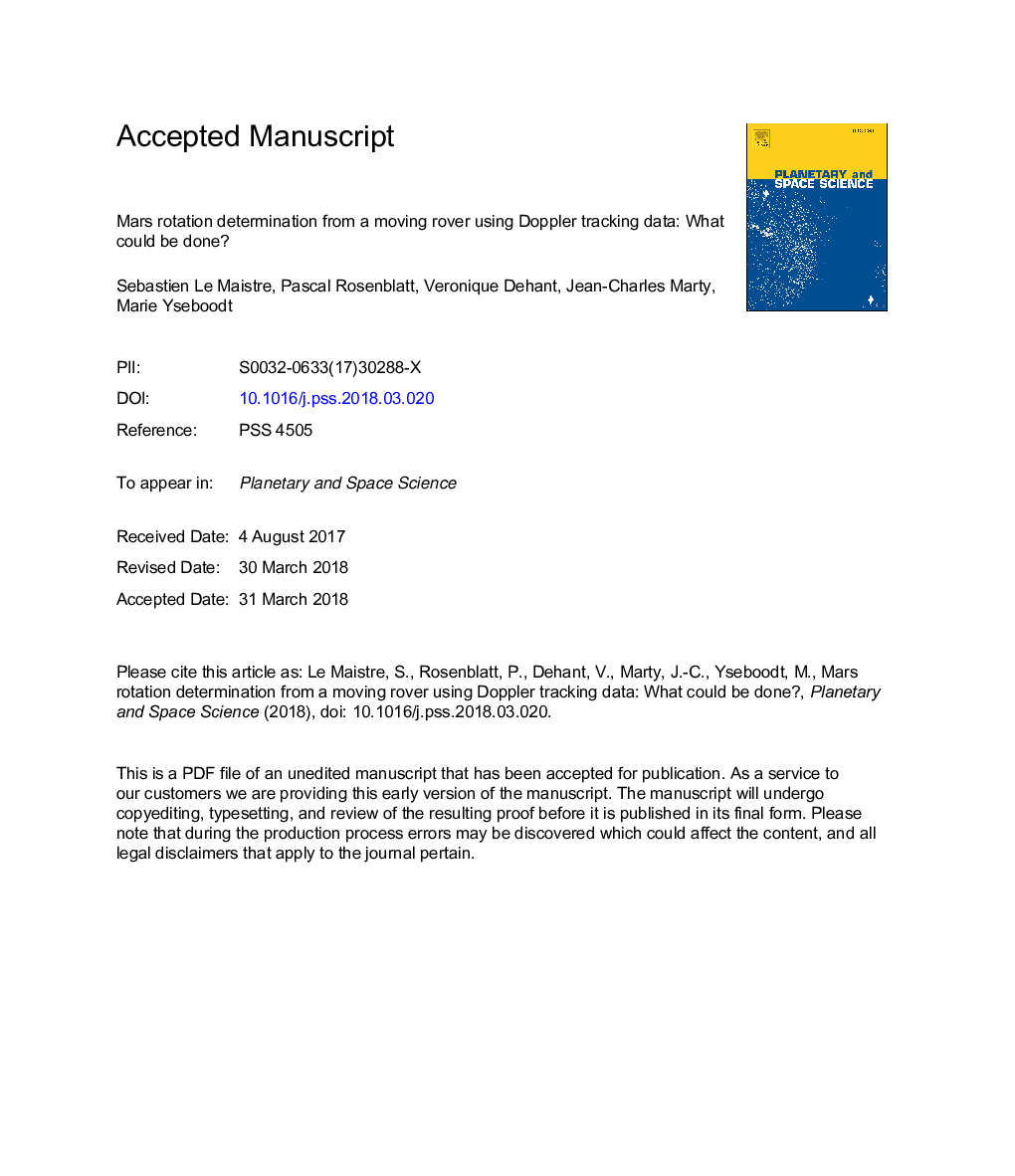| کد مقاله | کد نشریه | سال انتشار | مقاله انگلیسی | نسخه تمام متن |
|---|---|---|---|---|
| 8142028 | 1523881 | 2018 | 31 صفحه PDF | دانلود رایگان |
عنوان انگلیسی مقاله ISI
Mars rotation determination from a moving rover using Doppler tracking data: What could be done?
ترجمه فارسی عنوان
تعیین چرخش مریخ از یک روتر در حال حرکت با استفاده از داده های ردیابی داپلر: چه کاری می تواند انجام شود؟
دانلود مقاله + سفارش ترجمه
دانلود مقاله ISI انگلیسی
رایگان برای ایرانیان
موضوعات مرتبط
مهندسی و علوم پایه
علوم زمین و سیارات
فیزیک زمین (ژئو فیزیک)
چکیده انگلیسی
This paper is a case study providing some insights on what improvement could be achieved on the Mars Orientation and rotation Parameters (MOP) determination using radio tracking data from a moving rover. Thanks to high-performance mobility systems onboard new generation of rovers like ExoMars 2020, the position of the rover can be precisely known with respect to its previous position. This characteristic, together with the long life of the rovers and their steerable high-gain-antenna communication system, is shown here to provide an unexpected opportunity to improve the MOP determination. This paper presents the results of numerical simulations involving radio-science experiments between the moving rover and the Earth ground stations as well as between the rover and an orbiting spacecraft. The benefits of combining both links (direct-to-Earth and rover-orbiter) for the MOP determination is also assessed. The impacts of the spacecraft position accuracy as well as the frequency band used to communicate with it are quantified. It is shown that, after one Martian year of operation, the polar motion could be determined with 5 milliarcsecond (mas) of precision (formal error) from the rover-orbiter Doppler link, while it cannot be determined with usual equatorial lander-to-Earth radio link. This would allow for the first time the direct detection of the Chandler wobble amplitude in the polar motion of Mars, which is an important quantity to constrain the planet interior and atmospheric models. Although the moving rover Doppler data alone barely improve the current precision on the other MOP (like the length-of-day and nutation), a combination of those together with historical and future lander data would definitely help to fill gaps in the MOP signal and to decorrelate between the estimated parameters, thereby reducing the uncertainties in their determination.
ناشر
Database: Elsevier - ScienceDirect (ساینس دایرکت)
Journal: Planetary and Space Science - Volume 159, 15 September 2018, Pages 17-27
Journal: Planetary and Space Science - Volume 159, 15 September 2018, Pages 17-27
نویسندگان
Sebastien Le Maistre, Pascal Rosenblatt, Veronique Dehant, Jean-Charles Marty, Marie Yseboodt,
